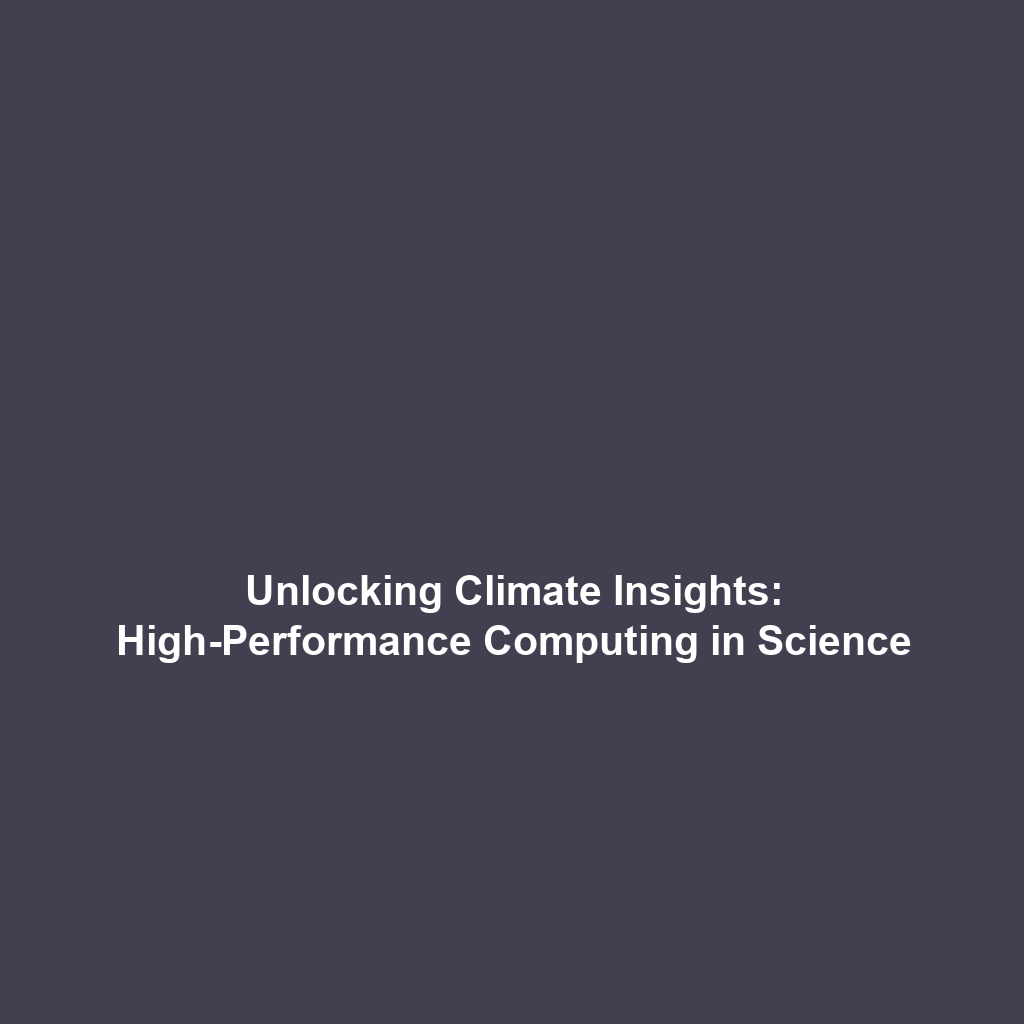Simulating Dark Matter and Dark Energy in Supercomputers
Introduction
Simulating dark matter and dark energy in supercomputers is a groundbreaking endeavor that seeks to unravel the mysteries of the universe. These simulations allow scientists to model cosmic phenomena that are otherwise difficult to observe directly. Dark matter and dark energy account for approximately 95% of the universe’s total mass-energy content, making their understanding crucial for astrophysics. By leveraging powerful computational resources, researchers can explore these enigmatic components and their effects on cosmic structure formation, Big Bang theories, and the ultimate fate of the universe.
Key Concepts
The Basics of Dark Matter and Dark Energy
Dark matter is a form of matter that does not emit light or energy, making it invisible and detectable only through its gravitational effects. In contrast, dark energy is a mysterious force that drives the accelerated expansion of the universe. Key concepts include:
- Gravitational Lensing: Light bending due to dark matter concentration.
- Cosmic Microwave Background: Remnants of the Big Bang providing insights into dark energy.
- Large-scale Structure: The arrangement of galaxies affected by dark matter and dark energy.
Computational Techniques
Simulating dark matter and dark energy involves complex algorithms and models that require substantial computational power. Techniques such as hydrodynamic simulations, particle simulations, and N-body simulations are at the forefront of this research.
Applications and Real-World Uses
Understanding how simulating dark matter and dark energy is used in astrophysical research has far-reaching implications. Notable applications include:
- Galaxy Formation: Simulations help predict the behavior of galaxies under the influence of dark matter.
- Cosmological Surveys: Data from supercomputer simulations support observational projects like the Sloan Digital Sky Survey.
- Gravitational Wave Detection: Analyzing the impact of dark energy on the propagation of gravitational waves.
Current Challenges
Despite advancements, there are several challenges in the study of simulating dark matter and dark energy in supercomputers:
- Computational Limitations: The enormous computational resources required often restrict high-resolution simulations.
- Model Uncertainties: Many theoretical models remain untested or inconsistent with observational data.
- Data Interpretation: The complex data generated from simulations can be challenging to analyze effectively.
Future Research and Innovations
Future research into simulating dark matter and dark energy in supercomputers promises innovative breakthroughs. Potential advancements include:
- Next-Generation Supercomputers: Technologies like quantum computing may revolutionize simulations.
- Multi-messenger Astronomy: Combining data from different cosmic phenomena to improve models of dark matter and dark energy.
- Improved Algorithms: Developing sophisticated algorithms for more accurate and efficient simulations.
Conclusion
Simulating dark matter and dark energy in supercomputers is vital for enhancing our understanding of the cosmos. As researchers tackle existing challenges and embrace future innovations, the insights garnered will significantly impact the field of astrophysics. For more information on related topics, consider exploring our articles on dark matter research and dark energy discoveries.


